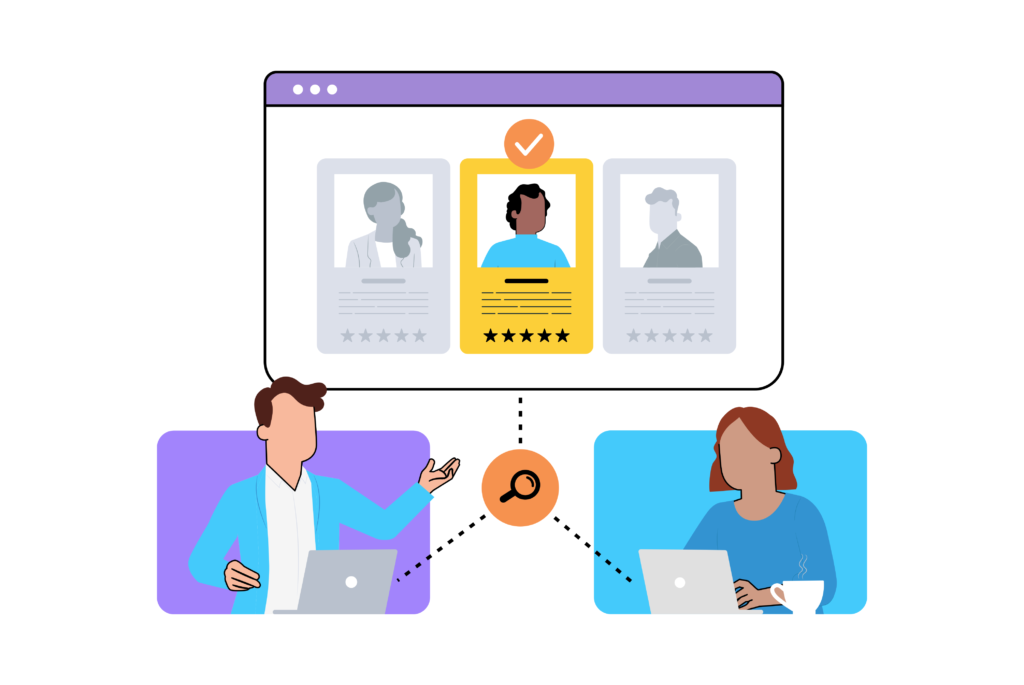How to Hire Someone You’ve Never Met in Person
Bringing someone new on board is always a big call, but it’s even harder for you to do it knowing that you may not meet the person face to face. Whether you are recruiting remote workers, freelancers, or global employees, finding the right person for the job demands a strategic process. Here’s a breakdown of 8 steps that ensures a smooth and successful process.

1. Define Clear Job Expectations
Define precisely what you are looking for before launching the hiring process. Clearly define what the job role is, what needs to be done, and expectations. Outline the skills, experience, and work ethic needed for effective job performance. This clarity helps you as well as the candidates to develop a better idea of the role with lower possibilities of a mismatch.
2. Use a Structured Hiring Process
When hiring remotely, structure is crucial. Follow a standardized process to ensure consistency and fairness. A well-defined hiring funnel might include:
- Resume screening
- Initial assessment (e.g., skills test or sample task)
- Virtual interviews
- Final evaluation and decision
By maintaining a structured process, you can compare candidates objectively and choose the best fit.

3. Conduct Thorough Virtual Interviews
Since you can’t meet candidates in person, a well-planned virtual interview is essential. Use video conferencing tools like Zoom, Google Meet, or Microsoft Teams to assess communication skills, professionalism, and cultural fit. Here are some tips for a successful virtual interview:
- Test the technology beforehand to avoid disruptions.
- Use structured questions to evaluate skills and experience.
- Pay attention to body language and communication style.
- Ask behavioral questions to understand how they handle challenges.
4. Assess Skills and Work Samples
Request work samples, case studies, or a skills test to validate a candidate’s abilities. If you hire a writer, ask for a writing sample. If you’re hiring a developer, get ready to set up a coding challenge. It guarantees that you’re hiring someone who can actually produce results, and not just someone with an impressive resume.
5. Look for references and do a background check
Reference checks are more crucial when it comes to hiring someone remotely. Take to past employers or colleagues to validate work history, skills, and professionalism. Also, the candidate background check can be useful in certain cases, especially when the role requires sensitive information.

6. Evaluate Cultural Fit
Skills and experience aside, cultural fit contributes to job performance and satisfaction, as well. Make sure he/she is a fit for your company in terms of values and work ethics and communication style. Ask questions about
7. Start with a Trial Period
If you can, try a trial period (and/or a project-based contract) before slate something in for the long haul! This gives both parties a chance to see how they work together without a full-time commitment. During this time, evaluate the candidate’s track record, dependability, and independence.
8. Use Clear Contracts and Agreements
When hiring someone you’ve never met, transparency is key. Draft a clear employment contract that outlines:
- Work expectations
- Payment terms
- Confidentiality agreements
- Termination policies
Having everything documented minimizes misunderstandings and protects both parties.
9. Communicate Often and Manage Expectations
Once you’ve hired the candidate, ensure smooth onboarding by maintaining regular communication. Employ project management tools such as Trello, Slack or Asana to keep an eye on work and expectations. Hold Frequent Check-Ins to Offer Feedback, Answer Questions, and Confirm You Are Both on the Same Page with What the Company Is Looking For.
10. Trust Your Instincts but Verify
While gut feelings matter, always back them up with data and evaluation. Ability to learn quickly should be checked even if the candidate looks promising. On the other hand, if you find something unfamiliar during the interview process, investigate further before making a decision.

Conclusion
Hiring someone you’ve never met in person requires a strategic approach, combining technology, structured interviews, skill assessments, and clear communication. By following these steps, you can make informed hiring decisions, build a strong team, and ensure that distance is no barrier to success.

